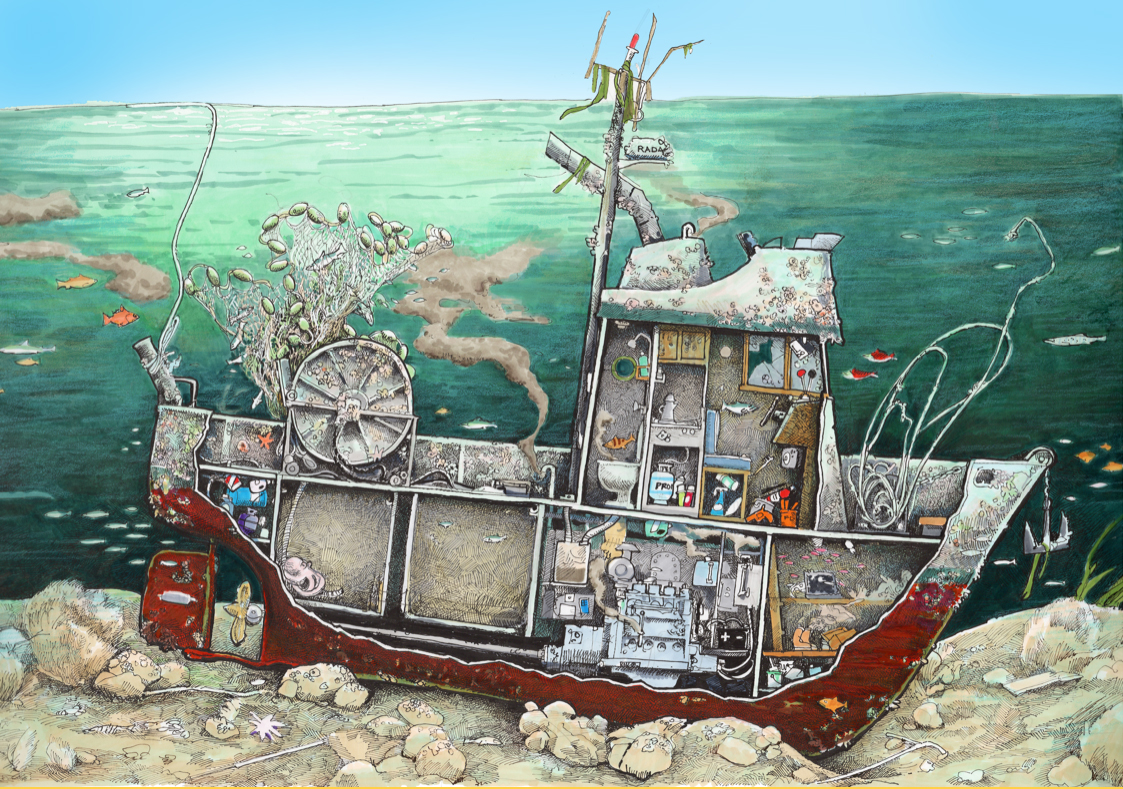The Anatomy of Abandoned and Derelict Vessels
During National Safe Boating Week (May 18-24), NOAA’s Office of Response and Restoration is taking a closer look at the anatomy of abandoned and derelict vessels.

Illustration by Tom Crestodina.
The waterways and coastlines of the U.S. are a national resource, providing critical habitat, supporting jobs and providing views and recreation, but they are also a dumping ground for sunken, abandoned, and derelict vessels. Abandoned and derelict vessels (ADVs) are a problem in most ports and waterways. Some are dilapidated but still afloat, and others are left stranded on shorelines or hidden just below the surface of the water.
These vessels can have significant and diverse effects on the coastal environment, including oil pollution, marine debris, and wildlife entrapment. They become hazards to navigation, illegal dumping of waste oils and hazardous materials, and general public health hazards.
The wreck itself can scour, shade and physically crush benthic habitats such as corals and sea grasses. As the vessels break into smaller pieces these effects are amplified, and the cumulative footprint of damage becomes much larger than the vessels themselves. In the cutaway of the illustration above, this sunken vessel shows there are a lot of other hazards to consider.
 An official website of the United States government.
An official website of the United States government. 